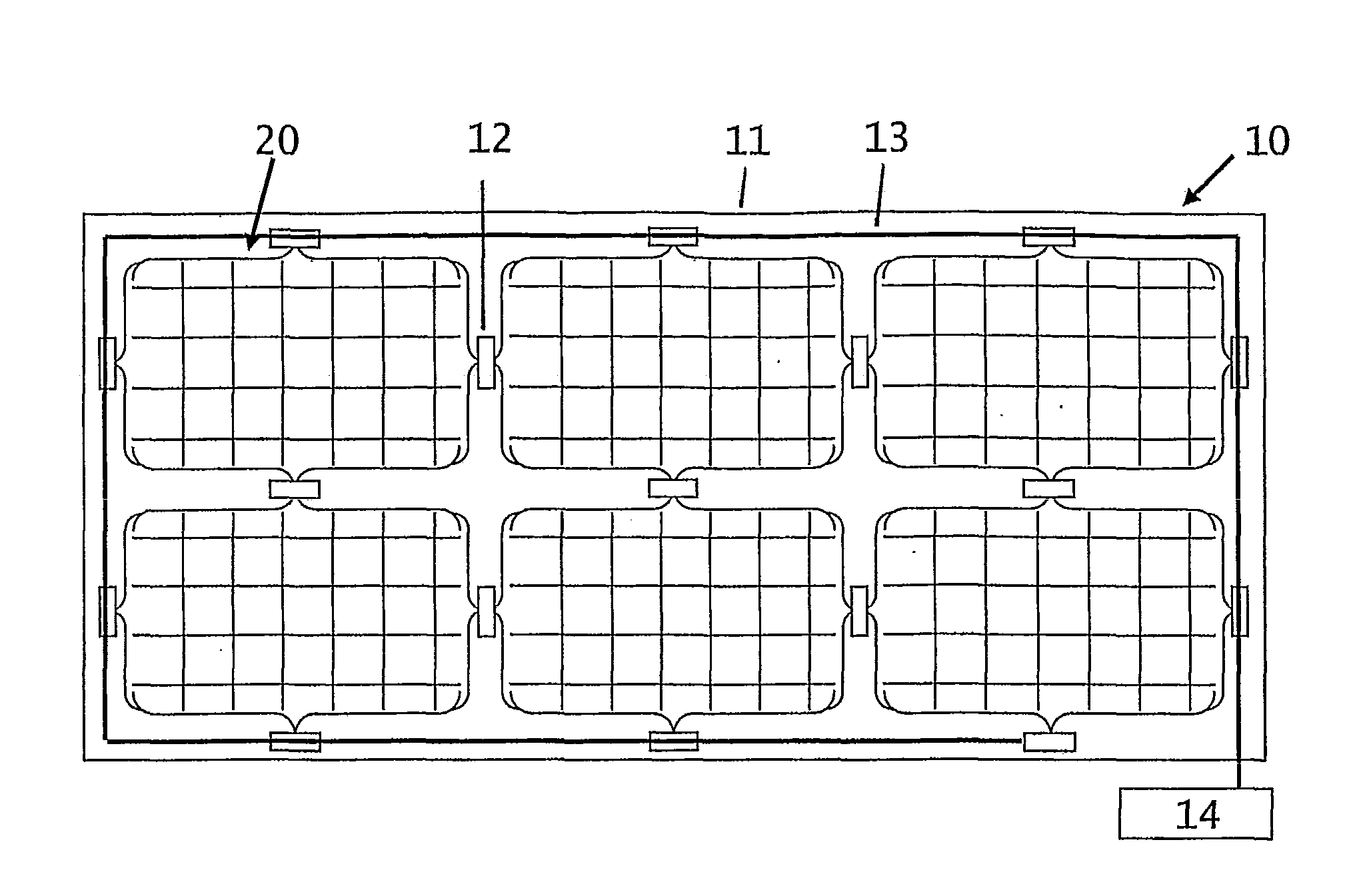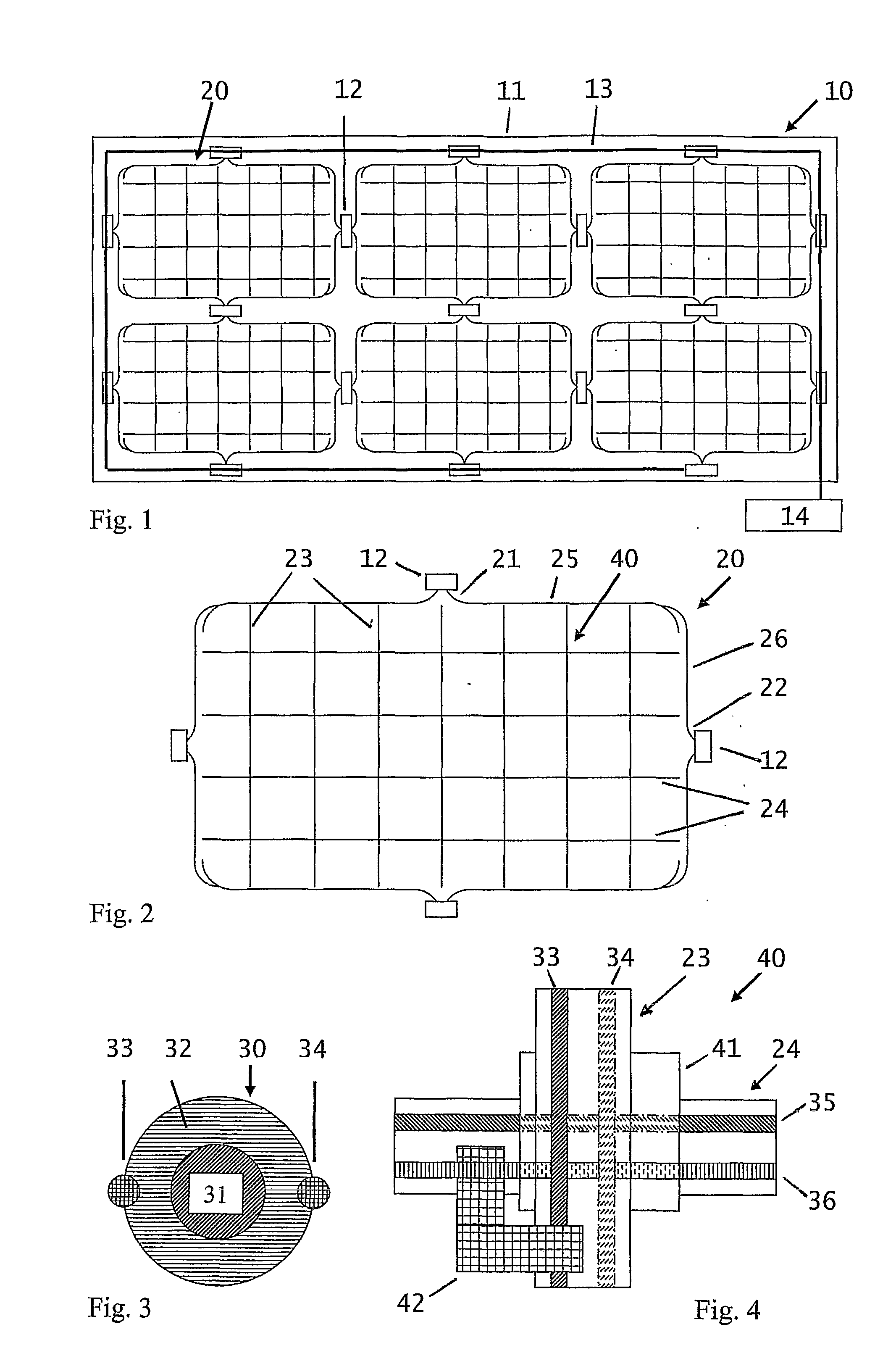Water detector
a detector and water technology, applied in the field of detector systems, can solve the problems of large amount of water, electrical corrosion and other forms of corrosion, and the disadvantages of the above mentioned methods
- Summary
- Abstract
- Description
- Claims
- Application Information
AI Technical Summary
Benefits of technology
Problems solved by technology
Method used
Image
Examples
Embodiment Construction
[0011]The invention will be disclosed with reference to the drawings wherein FIG. 1 shows the detector system in a typical embodiment. An installation 10 comprises six modules 20 in order to monitor an area 11. Each module 20 is interconnected with its nearest neighbour using a connection device 12. The modules 20 are also connected to a databus 13 which again conveys signals to a monitoring unit 14.
[0012]FIG. 2 shows a single module comprising a first end contact 21 which terminals a plurality of wires 23 using an interconnect 25. Correspondingly in a direction substantially perpendicular to the end contact 21 a second end contact 22 is provided, terminating plurality of wires 24 via an interconnect 26.
[0013]Such a module can be executed in a number of embodiments, in one embodiment as conductors on a substrate, typically embodied as printed conductors on for instance an acetate, a flexible foil suited for lying of the structures such as inside ceilings where the foil is transporte...
PUM
| Property | Measurement | Unit |
|---|---|---|
| mutual distance | aaaaa | aaaaa |
| electrical | aaaaa | aaaaa |
| flexible | aaaaa | aaaaa |
Abstract
Description
Claims
Application Information
 Login to View More
Login to View More - R&D
- Intellectual Property
- Life Sciences
- Materials
- Tech Scout
- Unparalleled Data Quality
- Higher Quality Content
- 60% Fewer Hallucinations
Browse by: Latest US Patents, China's latest patents, Technical Efficacy Thesaurus, Application Domain, Technology Topic, Popular Technical Reports.
© 2025 PatSnap. All rights reserved.Legal|Privacy policy|Modern Slavery Act Transparency Statement|Sitemap|About US| Contact US: help@patsnap.com


